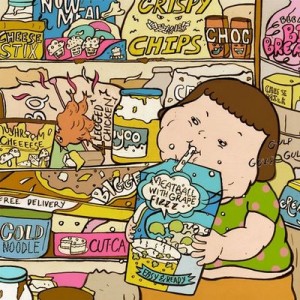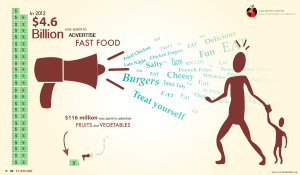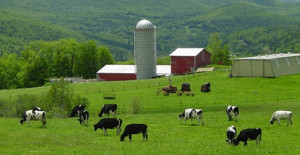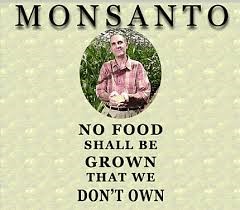The key to winning an argument is persuasion. When an argument starts, persuasion stops and winning doesn’t become the priority because without persuasion, arguments are now merely just fights. Throughout the five sources I used, Consumer Reports’ “You Are What They Eat”, Food Inc., “Organic Illusions,” “Frontline, PBS.org” and “Resisting Food Safety,” each writer intentionally uses both statistics and facts in order to persuade the readers’ opinion of either agreeing with or disapproving the customs of the food industry. Even though these articles have different stances and opinions, the writers each are affiliated with a similar theme, how food safety is related to issues of power. Whether it be for/against big businesses, or for/against organic substances relative to conventional foods, the writer’s purposes are all comparative.
In the documentary Food Inc., experts argue for the transparency of the industrial food system, both questioning the efficiency of the system as a whole and the governments’ relation to big businesses involved. Eric Schlosser, author of “Fast Food Nation”, said “They don’t want you to know what you’re eating because if you knew then you may not want to eat it.” With recent outbreaks of E. coli across the nation one can only question how the FDA is handling the cleanliness and preparedness of our foods and the states at which the facilities are being maintained. Tyson, the biggest meat packer in the world controlling 28% of the worlds beef, 18% of the worlds pork, and 25% of the worlds chicken, declined to speak in the documentary when approached by Food Inc.. Food inspections across the nation have dropped from 50,000 to 9,674 from 1974 to 2006. In the decade of 1996-2006, there were a reported 20 E. Coli outbreaks, most of which due to poor facility maintenance for livestock. Carole Moreson, a chicken farmer for Perdue says that now-a-days it isn’t even farming anymore, but inhumane mass production as most chickens never even see sunlight. Due to the decline of tobacco, most farmers turned to the chicken industry but have to borrow nearly $500,000 from big businesses in order to run roughly 2 chicken coupes. This causes farmers to become in debt and have to do whatever the companies ask of them or else they will go bankrupt and lose everything. This causes a shift of power from the farmer to the company. Corruption at its finest.
In Consumer Reports’ “You Are What They Eat,” the writer argues that what our animals are being fed directly affects us as the consumer. With corn being the main ingredient in animal feed, there has been a large increase of Food Borne Illnesses in the last decade. According to Food Inc., 30% of the United States land base is used for corn and 90% of supermarket products would contain either corn or soybean. With an average of 47,000 products in the commonplace supermarket, that means roughly 42,300 of the products would contain Corn or Soy Bean. Larry Johnson, an expert from the Center for Corn Research, says that “so much of our corn is just a clever manipulation of corn, no matter how you write it.” “There is considerable potential for contaminated animal feed or animal-feed ingredients to move between and within countries.” (You are What They Eat) “Cows can take this grass which we can’t digest, very few creatures can digest, and turn it into fuel.” (Michael Pollan, Frontline) Experts suggest that if you cut down the highly concentrated amounts of corn and add in grass-feeding, the risk for food borne illnesses would decrease remarkably. We feed them corn because it’s the cheapest, most convenient thing we can give them. Corn is incredibly cheap; it costs about $2.25 for a bushel of corn, which is about 50 pounds. It actually costs less to buy than it costs to grow (Frontline, PBS.org). The average farmer could process 200 bushels of corn a day.
In the Nestle article, the writer states that there are large amounts of government oversight within the food industry. As cleverly represented in the Food Inc. documentary through the use of flashcards, we see that high end food industry employees of the big businesses have found a home in government with positions that make, enforce, and legislate different laws pertaining to the rules and regulations of the FDA. Some may call this strategy but most would call it corrupt. FDA stands for Food and Drug Administration but after reading these articles and watching videos and documentaries it seems more likely that the FDA is more focused on the Drug portion than the Food section. For example, there used to be over 1,000 slaughterhouses in America; however, today there are 13. One may look at this and say good, now they can regulate the facilities better because there are a lesser amount to check. But the sad reality is that because they don’t properly regulate these 13 slaughterhouses then some acts become more careless and if some sort of illness or disease falls upon the slaughterhouse, 1/13th of the nation’s meats are put at risk of becoming sickly. Change begins with the oversight of the FDA’s slaughterhouse protocol and to maintain a strong code of ethics in the higher office. Humans are vulnerable to pathogens, drugs, and contaminants consumed by the animals we eat so why would we allow some things to skate by when it could put not only others but yourself at risk.
My call to action after reading this unit is that the change needs to begin in government. Put people in power that are rightfully deserving and can uphold the strong code of ethics and morals designed by this nation’s leaders. You don’t need to reinvent the wheel, you just need to simply learn how to steer what’s already shaped for you. Make it so carrots are better priced than a bag of chips or a box of candy. The only thing that should be processed is what’s occurring in our government. It’s not that there is not enough food, it’s that the scales of nutritional value are unbalanced.
Works Cited:
“You Are What They Eat.” Consumer Reports, January 2005.
Hurst, Blake. “Organic Illusions.” The American, October 1, 2012.
Nestle, Marion. Safe Food: The Politics of Food Safety. Berkeley: University of California Press, 2010.
Pollan, Michael. “Modern Meat”. Frontline, September 24, 2013.
- Describe your understanding of the “writer’s project”? How were you able to identify the texts’ “project”? Discuss your own “project” as it pertains to this particular blog article.
- Finding the “writer’s project” is vital when it comes to understanding the Point of View of a source. From the examples we went over in class I was able to derive the writers’ project from studying the points presented and by trying to analyze the given arguments to find what side they were trying to argue. In the Kanye West music video we watched in class, by studying the imagery used in the video and breaking down the lyrics I was able to figure out what points Kanye was trying to convey. My personal “project” with this blog article was to bring to light the issues within the food industry today presented by the 5 sources I used in my paper.
- Describe your completion of the “Sorting it Out” workshop? What sections were most beneficial to the development of your ideas—and why? Discuss how this workshop assisted in development of draft and/or assignment organization?
- I did this workshop on my own outside of class due to missing class for personal reasons. Doing it on my own was definitely far more difficult because I didn’t really understand from the get-go what I was supposed to be synthesizing. I had to “Sort it out” on how to do a Sorting it out workshop. Along with this blog article I turned in, these were possibly two of the worst pieces I’ve put my name on when it comes to writing so all I can do for the deration of this class is prioritize better and prepare. I imagine that these workshops would have made it much easier to do the paper as the point was to break down what we were researching and organizing our thoughts.
- Describe your understanding of synthesis. What is its importance? How did it manifest within your drafts and/or final blog article? Provide examples.
- The definition from Meriam-Webster for the term synthesis is a complex whole formed by combining. Synthesizing takes a grouping of sources and meshes them into one. By synthesizing, my paper would be more reliable and add both my thoughts and opinions along with those of the outside sources that I referenced.
- Describe your own accomplishment (ofsomething) during this unit.
- I’d like to admit that I accomplished something but this paper represented the worst side of my academia as I did everything last minute. I suppose that something I accomplished was turning in each draft. The highest grade I feel that I deserve is a C.
- Discuss the evolution of the main idea. Where did you begin (include the example) and show its progress (again, include example) throughout the drafting/revision process. To what do you attribute its evolution?
- When I first began this project I was deep into the documentary Food Inc., and wanted to base my project merely off of that. However, we needed to add 4 other sources, three of which were given, as we dove deeper into this unit. If I rewrote this paper I would lay out each source and go through and physically highlight the main arguments from each so I could have a better understanding of what the Writers Project for each source. When I was done my main idea surrounded the food borne illnesses surrounding corn fed animals.
- Discuss what organizational strategies you implemented in order to structure this blog article. Provide examples from a section(s) of an earlier draft and other excerpts in later drafts to support your response.
- The main organizational strategies I used were simply going article to article and adding synthesis for their arguments and my thoughts. There was no direct strategies other than making sure I covered all of the bases.
- Provide an example of the final draft where you successfully synthesize 3 texts in a concise and direct manner. Discuss how this evolved throughout the drafting process for you.
- Discuss the evolution of the ‘lede’ in earlier drafts and its final version (provide examples of each): where did you begin, what feedback did you receive, and how did it end up in final blog article?
- My lede didn’t change from my earlier drafts to the final version. I didn’t receive any feedback from the teacher but I also didn’t reach out to the writing center like I usually would.
- Name a specific writing/researching/revision goal you’d like to work on during the next Unit projects.
- I would like to give my actual all for the next units. This unit is a terrible representation of my work ethic and my work attitude. However, it still happened so I need to step up and take responsibility for my lack of trying on this section. My goals for the next three units is to fully take all the necessary steps provided by Professor Barone so that I can be successful in my writing and to gain an understanding and further my knowledge on the topics discussed.


















